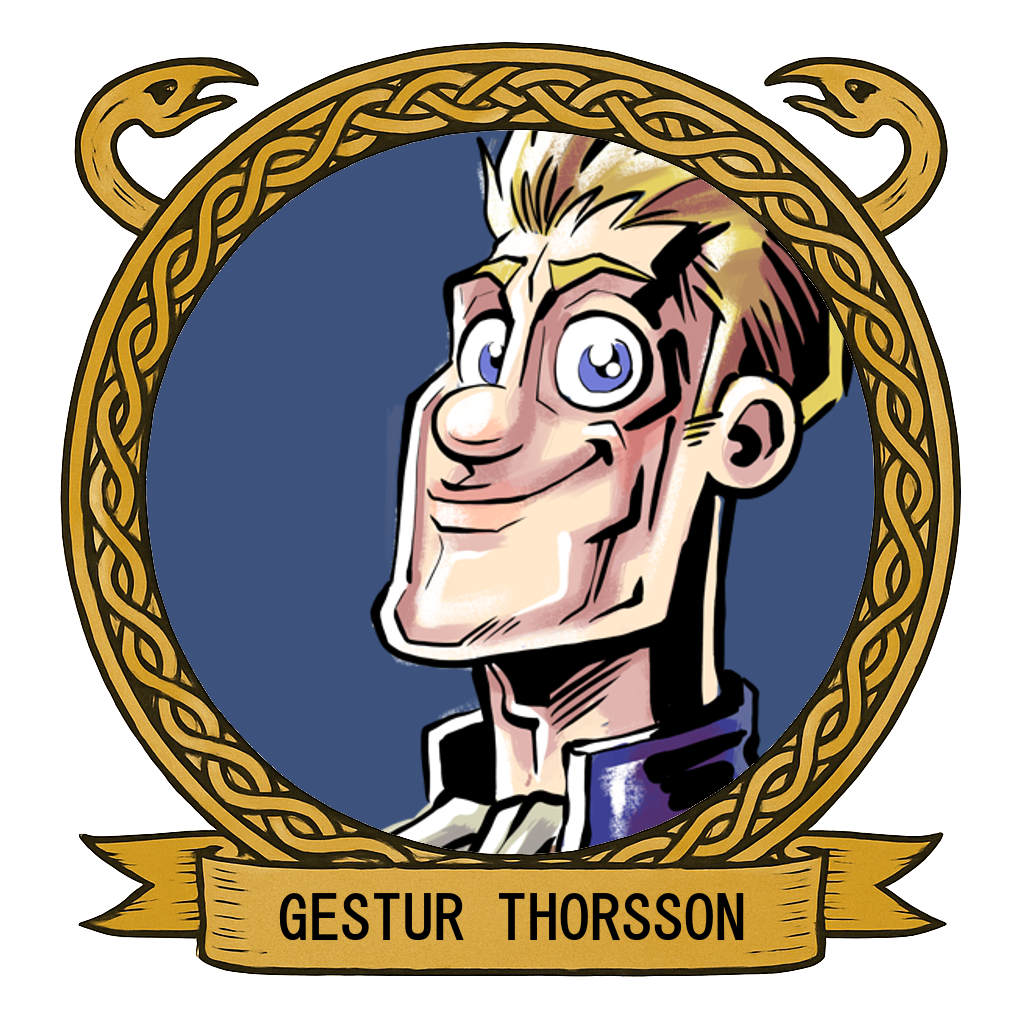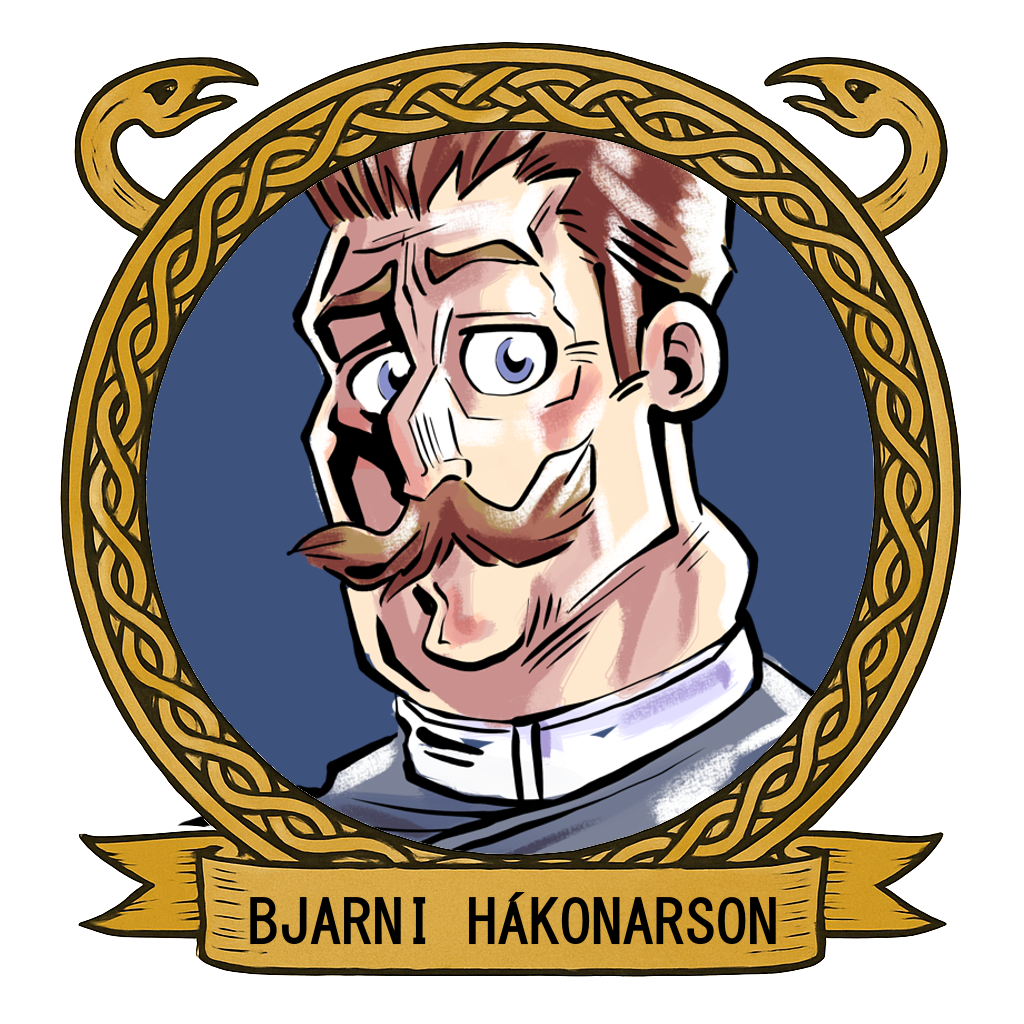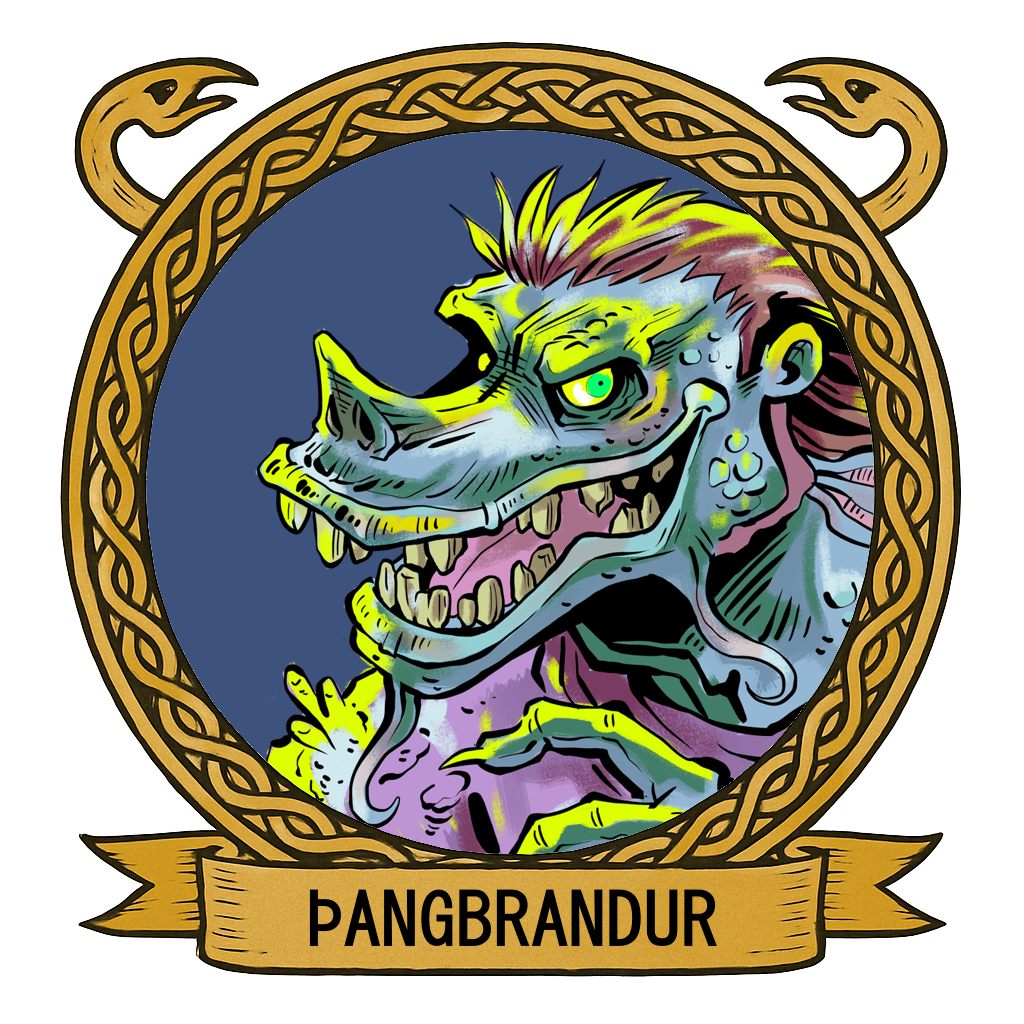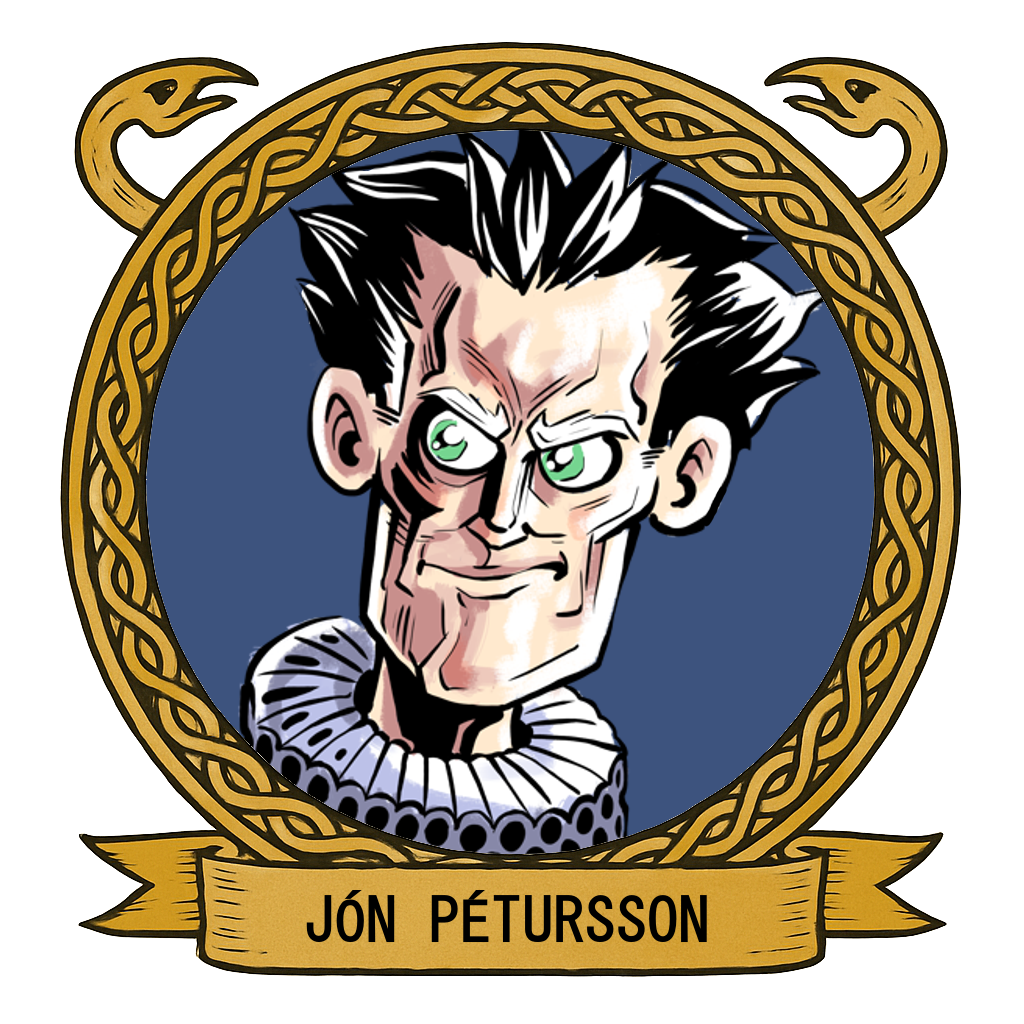
Gestur
The naive exorcist with a good heart
A young priest with real belief and little power. Brave and bright-eyed, he sees hope where others see death.
Narrative Role
- Protagonist and emotional POV for the reader
- Unwavering bravery in a cruel world
- Catalyst for spiritual redemption on the farm
Design Notes
Wide eyes and youthful energy contrast with the grim world around him. Often drawn in lighter tones, signaling optimism and empathy.
“I’ve never seen a sea monster up close. How lucky am I?”

Bjarni
Stubborn patriarch haunted by guilt
A stern yet devout farmer, Bjarni clings to faith and order in the face of escalating horror.
Narrative Role
- Represents denial and repression
- Symbol of patriarchal control eroding under pressure
- Redeems himself in a powerful act of faith
Design Notes
Broad shoulders, fixed expression, and a loosened clerical collar suggest his inner strain.
“You people see monsters in fog. I see weakness in faith.”

Þangbrandur
King of the mermen
A cruel, ancient sea-beast monarch driven by hunger, ritual, and greed.
Narrative Role
- Primary antagonist in Arc 1
- Represents greed, pride, and the raw destructive power of myth
- Downfall caused by unity and faith
Design Notes
Reptilian grin, glowing eye, and patchy scales blend Norse sea myths with punk horror.
“You pray to gods. I dine with mine.”

Sigfríður
The rational heart of the farmhouse
Calm and intuitive, she senses what others ignore. Her determination drives Gestur into the story.
Narrative Role
- Acts as bridge between rational and spiritual world
- Initiates call for help that brings Gestur
- Contrasts Bjarni’s denial, highlighting shifting gender roles
Design Notes
Calm gaze and modest attire convey resolve rather than fear. Red headwear and collar signal elegance.
“You can keep rationalizing, Bjarni — I’m going to find out what’s killing us.”

Jón
The blind priest
He sees nothing beyond scripture, sly and pious, fearing monsters less than loss of control.
Narrative Role
- Provides tension between sincerity and opportunism
- Comic relief with edge
- Represents institutions more about control than salvation
Design Notes
Rigid posture and elaborate collar highlight status and sly nature.
“Tales of monsters are for children. God is for men.”